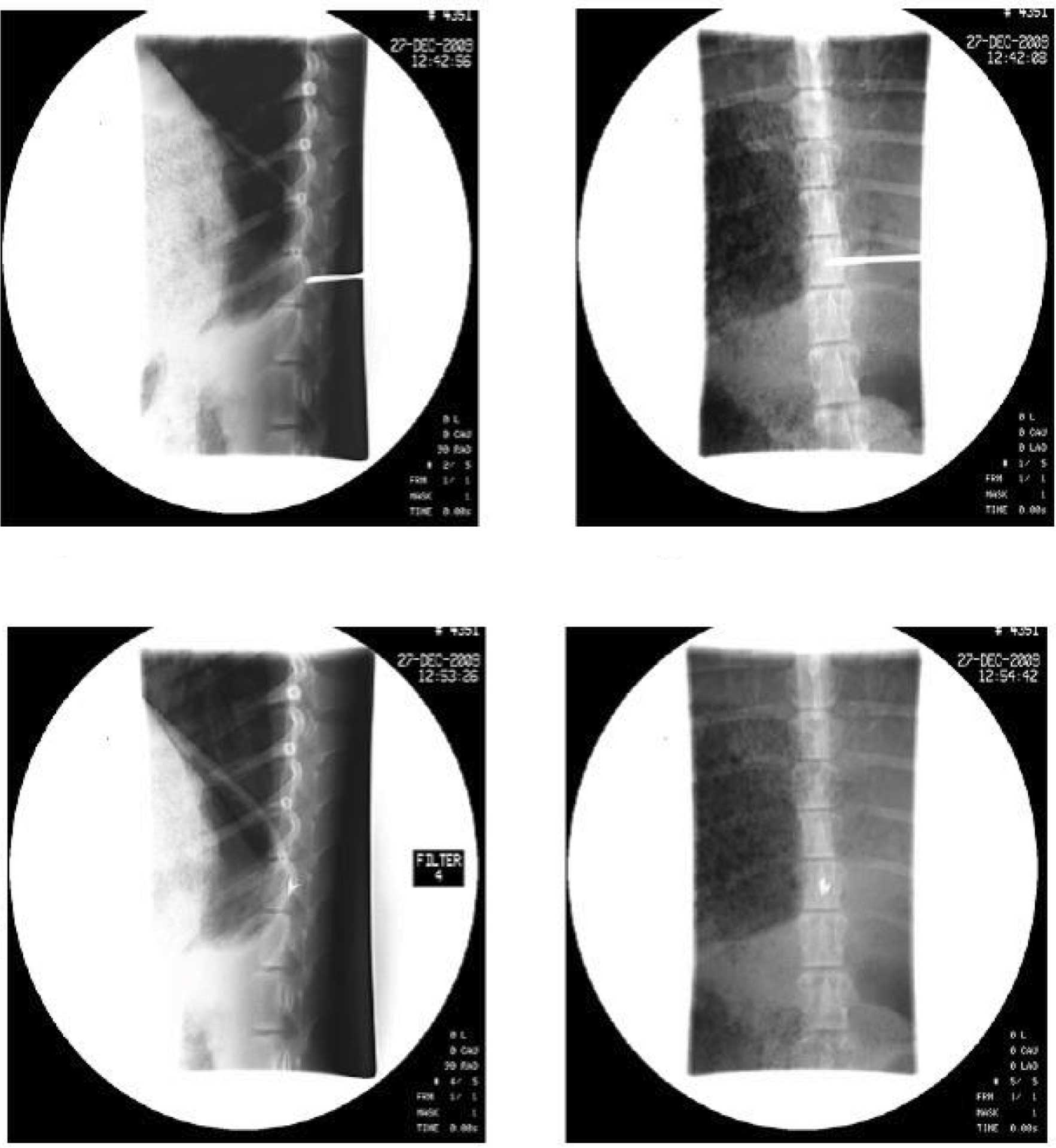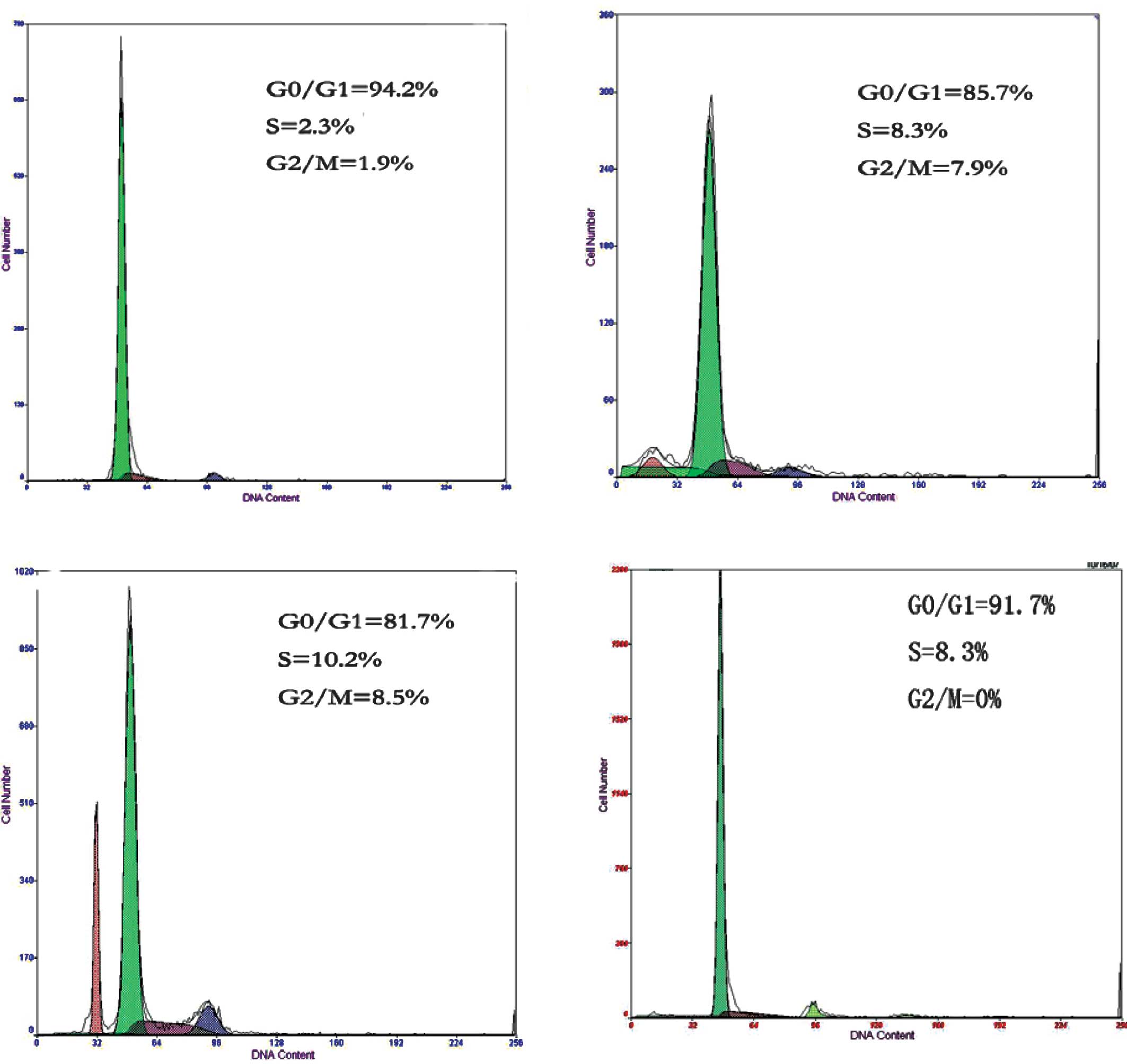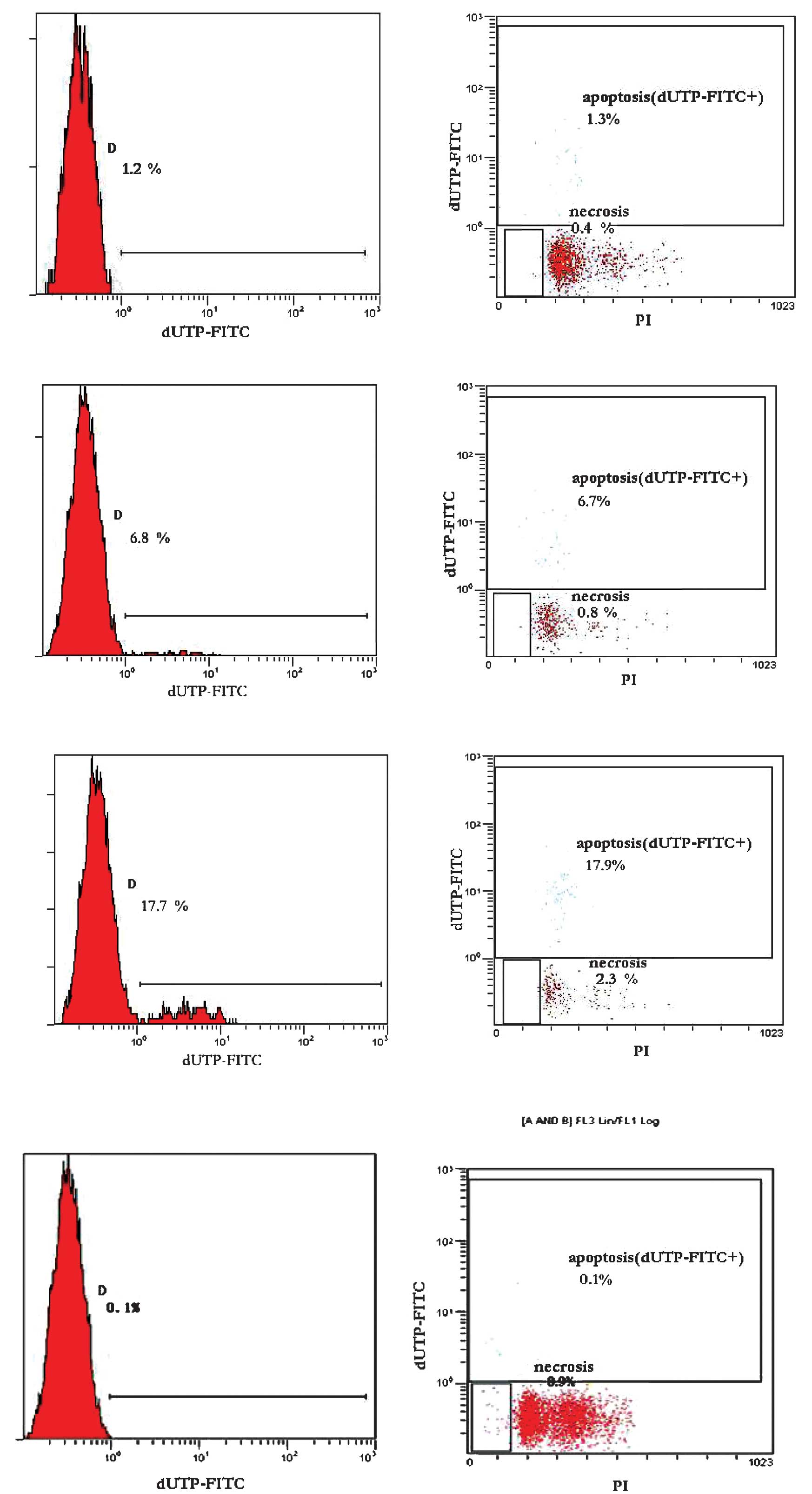Changes in cell cycle, apoptosis and necrosis following the establishment of a 125I brachytherapy model in the spinal cord in Banna mini-pigs
- Authors:
- Published online on: November 17, 2011 https://doi.org/10.3892/ol.2011.489
- Pages: 315-320
Metrics: Total
Views: 0 (Spandidos Publications: | PMC Statistics: )
Total PDF Downloads: 0 (Spandidos Publications: | PMC Statistics: )
Abstract
Brachytherapy is regarded as the most effective method in the treatment of metastatic spinal tumors since little damage is caused to surrounding healthy tissue. However, this method may cause radiation myelopathy if an overdose occurs. In the present study, we established a Banna mini-pig 125I spinal cord implantation model to provide a tool for the study of how to reduce these types of side effects. Cell cycle alteration, apoptosis and necrosis of spinal cord neurons in the presence of various doses and durations of 125I brachytherapy were also investigated. The pigs were randomly divided into four groups, A, B, C and D. In group A, four 125I seeds (total radioactivity, 4.0 mCi) were implanted into the dura mater of the spinal canal at the level of T13. In groups B and C, eight 125I sources (total radioactivity, 8.0 mCi) were inserted at the same location. Groups A and C were raised for up to 8 months and group B for only 2 months. Neurons from the swine spinal cord at the T13 level were collected and cell cycle analysis was performed. Apoptosis and necrosis were tested by a terminal deoxynucleotidyl transferase dUTP nick end-labeling (TUNEL) assay. The Banna mini-pig brachytherapy model was successfully established. Radiation myelopathy was closely associated with radiation dose and duration, more neurons were blocked in the G2 and S phases as dose and time increased, and an increase in apoptosis and necrosis was detected. Ratios of apoptosis and necrosis were reduced as lower doses and shorter durations of radiation were applied. Our results demonstrate that the Banna mini-pig is an ideal animal to study 125I brachytherapy. Low-dose and short-term brachytherapy may effectively decrease apoptosis and necrosis in spinal cord cells in Banna mini-pigs.












